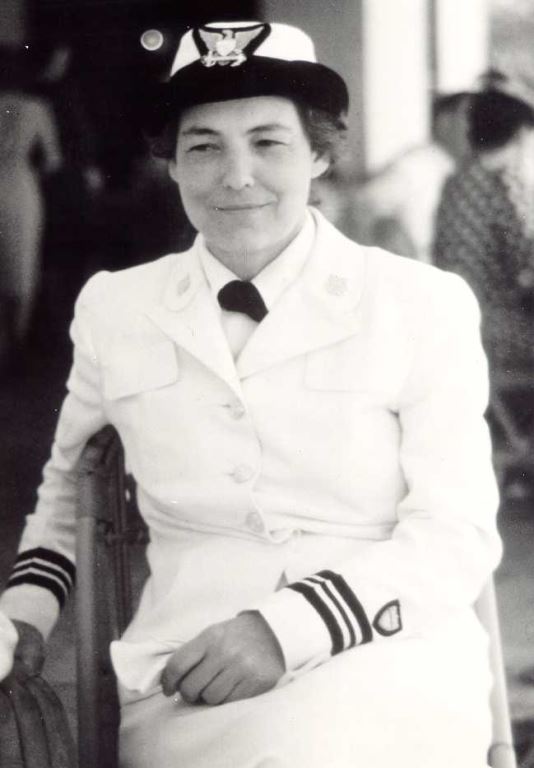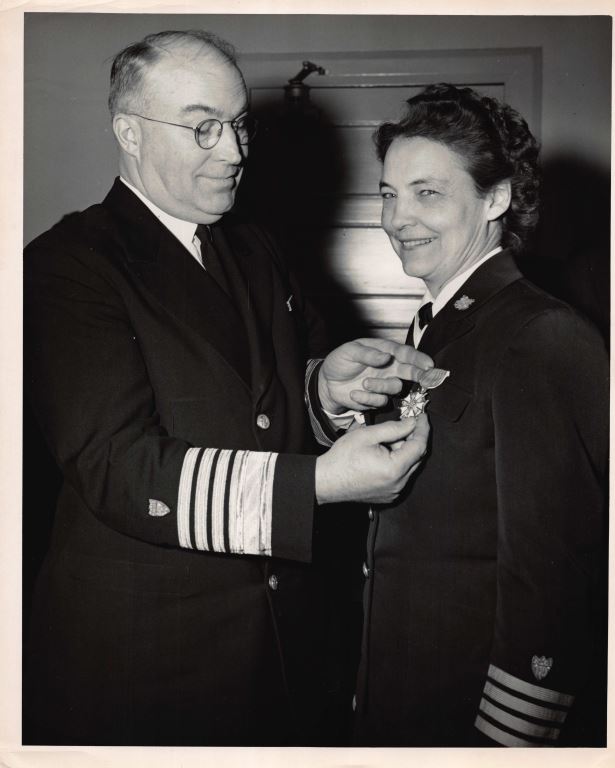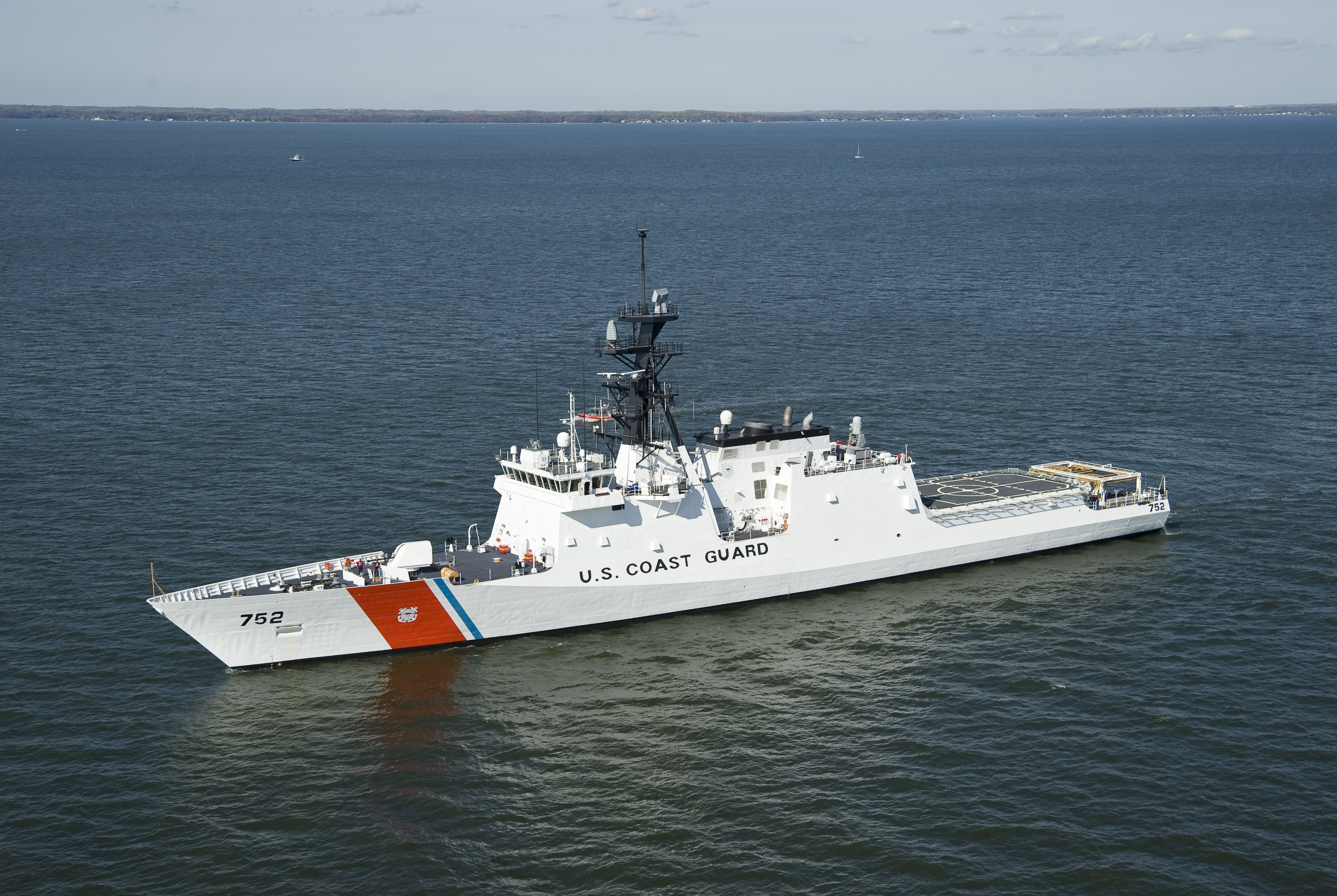The Long Blue Line blog series has been publishing Coast Guard history essays for over 15 years. To access hundreds of these service stories, visit the Coast Guard Historian’s Office’s Long Blue Line online archives, located here: THE LONG BLUE LINE (uscg.mil)
Coast Guard Capt. Dorothy M. Stratton held a life-long commitment to public service and was an inspirational leader during a very difficult time in the Nation’s history.
Stratton was born on March 24, 1899, in Brookfield, Missouri, the daughter of the late Reverend Richard Stratton and Anna Troxler Stratton. She attended high school at Lamar, Missouri, and Blue Rapids, Kansas, before graduating from Ottawa University in Ottawa, Kansas, with a Bachelor of Arts degree. 
For the first few years after graduation, Dorothy Stratton alternated between teaching and studying. Her career in education began in Brookfield, Missouri, where she taught history for two years. She then accepted a position as high school teacher in Renton, Washington. In 1923 she went to San Bernadino, California, where she served as vice-principal of Sturges Junior High School and, later, Dean of Girls and vice-principal of Sturges High School.
Later, in 1924, Stratton received a Master of Arts in Psychology from the University of Chicago. In 1933 she earned a Doctor of Philosophy in Student Personnel Administration from Columbia University. She also studied at Northwestern University, the University of Washington, and the Berkeley and Los Angeles branches of the University of California. Later in 1933, after receiving her Ph.D., Stratton joined the faculty of Purdue University as Associate Professor of Psychology (becoming a full professor in 1940) and the Dean of Women.
During Stratton’s administration at Purdue, the women’s program expanded in many directions. The undergraduate enrollment of women students increased from 500 to over 1,400, and three modern residence halls for women were built. A liberal science program for women in the School of Science was inaugurated, and an employment placement center for Purdue women was instituted. Another of her contributions toward the education of women was the founding of the Housemother’s Training School at Purdue, which provided intensive training to hundreds of fraternity and sorority housemothers from across the country.
Capt. Stratton had the unique distinction of serving her country through three of the women’s branches of U.S. Armed Forces. In June 1942, she served as a member of the Selection Board of the Army Fifth Corps Area for the first group of WAC officers. Later that summer, she was granted a leave of absence from her duties at Purdue to enter military service and join the Women’s Reserve of the Navy as a senior Lieutenant. After completing the first indoctrination course given WAVE officers at Smith College in Northampton, Massachusetts, she was assigned as assistant to the commanding officer of the U.S. Naval Training Station, in Madison, Wisconsin.
On Nov. 24, 1942, a few hours after President Roosevelt signed the bill authorizing the Women’s Reserve of the Coast Guard, newly promoted Lt. Cmdr. Stratton was named as the Director of this Coast Guard branch. She became the first female officer accepted for duty in the history of the service. She was advanced to commander on Jan. 1, 1944, then to the rank of captain one month later to become the first Coast Guard woman advanced to those officer ranks.
.jpg?ver=f1yRLKJTwewNLovwcwtnYA%3d%3d) Under Capt. Stratton’s able and dynamic leadership, the Women’s Reserve of the Coast Guard grew to an organization of nearly 10,000 enlisted and 1,000 commissioned SPARS. The catchy nautical title of “SPAR,” as the Women’s Reserve was more commonly known, was originated by Capt. Stratton. She coined the acronym from the first letters of the Coast Guard’s famous fighting motto, Semper Paratus and its English translation “Always Ready.” Primarily responsible for originating the policies for SPAR procurement, training, assignment, and morale, Stratton directed the SPARS into areas of greatest impact to the Coast Guard in which they contributed substantially to the war effort.
Under Capt. Stratton’s able and dynamic leadership, the Women’s Reserve of the Coast Guard grew to an organization of nearly 10,000 enlisted and 1,000 commissioned SPARS. The catchy nautical title of “SPAR,” as the Women’s Reserve was more commonly known, was originated by Capt. Stratton. She coined the acronym from the first letters of the Coast Guard’s famous fighting motto, Semper Paratus and its English translation “Always Ready.” Primarily responsible for originating the policies for SPAR procurement, training, assignment, and morale, Stratton directed the SPARS into areas of greatest impact to the Coast Guard in which they contributed substantially to the war effort.
Stratton’s service as director of the SPARS ended on Jan. 16, 1946. She was awarded the Legion of Merit medal the day before, on Jan. 15th, for her, “exceptionally meritorious conduct in the performance of outstanding services to the Government of the United States as Director of the Women's Reserve of the United States Coast Guard Reserve.”
 Stratton was characteristically humble. Responding to the presentation, she stated:
Stratton was characteristically humble. Responding to the presentation, she stated:
“I am glad that this medal is called the Legion of Merit for it is to the “legion” that it is awarded, the Legion of 11,000 who volunteered to do a war-time job. As a representative of the Legion of Spars, I am happy to accept this award and to say how much we have appreciated the opportunity to serve in the Coast Guard.
The Coast Guard utilized the highest percentage of women of any of the Services. This is adequate testimony to the adaptability of the Coast Guard and to the ability of the women who entered its service. We have liked serving in the Coast Guard and we shall always be interested in its future.”
After her service to the Coast Guard, Capt. Stratton briefly served as the Special Assistant to General Graves Ersking, U.S. Marine Corps, Retraining and Reemployment Administration before assuming duties as the first Director of Personnel for the International Monetary Fund from 1946 to 1950. Capt. Stratton finished her professional career as the National Executive Director for the Girl Scouts of the United States of America; a position she held from 1950 to 1960. During her postwar career, Stratton also wrote a number of books, some of which are still in print today.
Stratton retired to West Lafayette, Indiana, where she had previously served on the faculty of Purdue. She had one brother, Capt. Richard C. Stratton, who served in the U.S. Army Medical Corps Reserves during World War II. Stratton was a member of the National Association of Deans of Women, American Association of University Women, Business and Professional Women's Club, National Education Association, American Association for the Advancement of Science, and an associate member of the American Psychological Association. She passed away in 2006 at the age of 107.
Capt. Dorothy M. Stratton was ahead of her time. Today, her pioneering spirit and dedication to duty continue to serve as a model for all women and men of the Coast Guard.
 |
The Coast Guard Cutter Stratton (WMSL-752) transiting the Chesapeake Bay. (U.S. Coast Guard photo by Petty Officer 1st Class Andrew Kendrick)
|
-USCG-